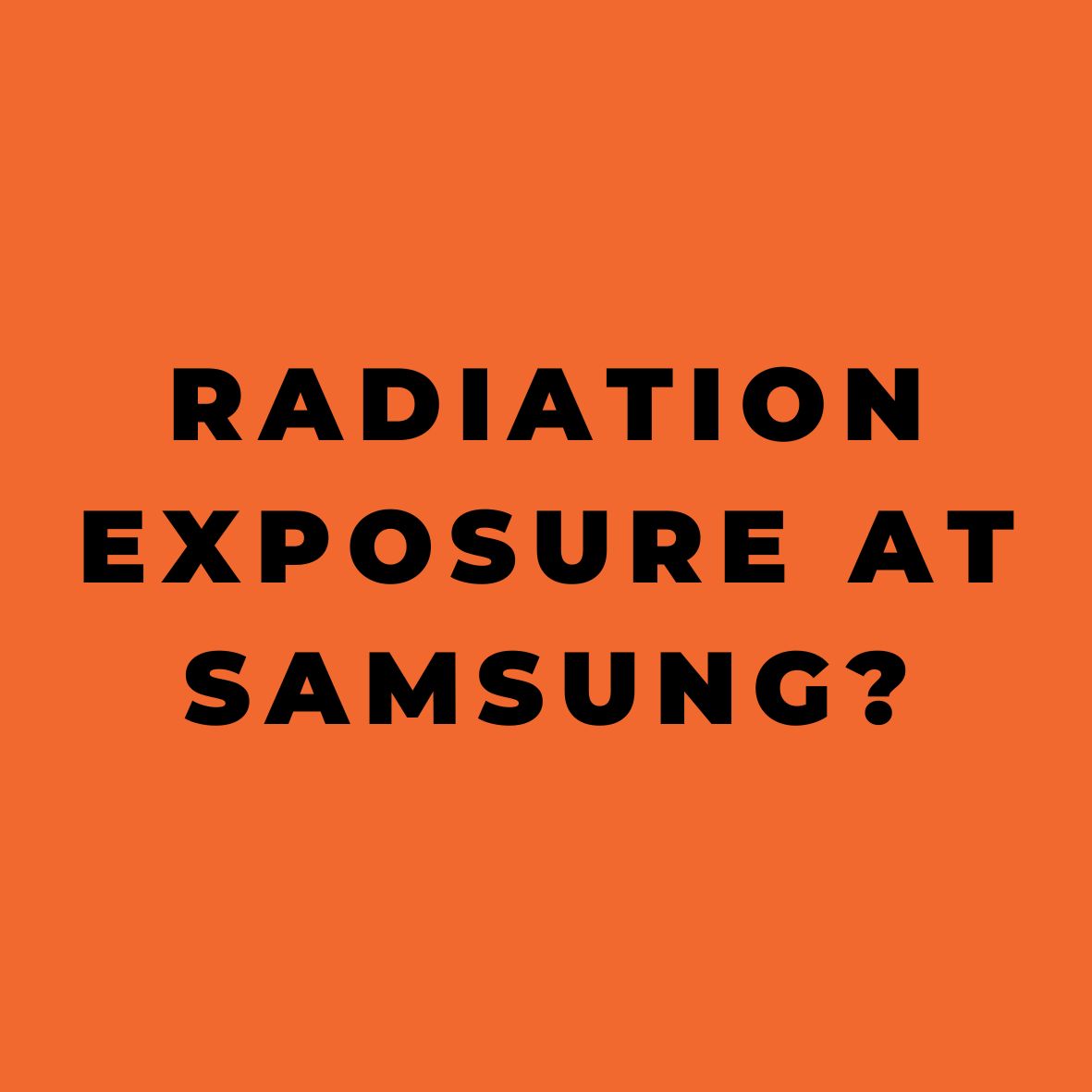Hi, Dr. Zoomie! I saw something in my feed about a radiation accident at Samsung a few days ago. What’s that about?
Huh – I hadn’t heard about that but, with the help of my search engine, I think I found enough to put some of the pieces together. With the caveat that some of this is likely to change as we learn more, here’s what I was able to piece together from reports by Reuters, Bloomberg, UPI, and the Korean Nuclear Safety and Security Commission.
Radiation is widely used in industry; radioactive sources can be used on vessels dredging shipping channels and harbors, ensuring that beer bottles are sufficiently filled, controlling the thickness of paper or steel as they’re manufactured, confirming the composition of metal alloys, and much, much more. In this case, Samsung was analyzing the composition of various materials by irradiating the materials with x-rays – just as ultraviolet light can cause fluorescent paints (for example) to glow with visible light so, too, will x-ray photons cause the materials they strike to fluoresce, and every element fluoresces in a different energy (similar to color) of x-rays – this is how lead paint analyzers work, using either a mini-x-ray tube or a small radioactive source. That’s what Samsung was doing – using x-rays to study the composition of electronic components, most likely as part of their routine quality assurance program.
According to the South Korean government the workers’ hands were exposed to levels of radiation high enough to cause skin burns and swelling – it takes at least 600 rem to the skin to cause this level of damage; a very high dose. With that sort of dose to the whole body (instead of just to the hands) there would be a relatively high chance of it being lethal; luckily it was only the hands that were exposed and they’re only a small part of the whole body. Our hands can be exposed to enough radiation exposure to ruin them – to require amputation – without putting the life of the person at risk. The South Koreans did report having performed blood tests that “show normal results,” but that’s not surprising since there are no blood-forming organs in the hands and because they hold only a small fraction of the blood in our bodies (the blood circulating through the hands doesn’t spend much time in the x-ray field).
Radiation injuries are not common, but those that do occur frequently involve the hands, which makes sense. If a person sees something curious on the ground they’ll pick it up; if it turns out to be a radioactive source the hands will get the highest dose. Similarly, a person using an x-ray machine to examine test specimens (mineral samples, soil samples, slides…or electronic components…might try to save some time by leaving the x-ray beam on while quickly moving samples in and out of the beam, again exposing the hands. I’ve met a few old-school radiochemists – whose career began during the Manhattan Project – who were missing fingers from holding test tubes with concentrated radiological samples and from changing samples in an x-ray diffractometer without first turning off the beam. The bottom line is that, while radiation injury is not very common, when they do occur it’s not surprising when they involve the hands.
What’s going to happen next is an investigation to find out how the radiation exposure occurred. It could be due to work practices – taking shortcuts such as what I described above, for example, or possibly a flawed procedure that results in high exposure to the hands of anyone following it (this would require the affected workers to be spending more time performing that procedure than anyone else). Another possibility is an equipment problem – problems with the device’s radiation shielding could be the culprit, the x-ray beam might be misaligned, or something else might be letting radiation leak out of the device. Performing radiation surveys with the machine turned on will help investigators figure this out.
However this happened, it surprises me that the workers don’t seem to have been wearing extremity dosimeters (“ring badges”) to measure dose to the hands. As an RSO, for example, I always require radiation workers to wear ring badges if they’re going to be handling radioactive sources or working with their hands in or near an x-ray field. If these workers weren’t wearing ring badges, hopefully the investigation will be able to determine why – and whether this was due to there not being a requirement to do so, if there was a requirement that they ignored, or if the machine design was such that ring badges weren’t needed, except that the machine malfunctioned or was damaged in some way. Once they can track down the cause(s) corrective actions can taken to try to prevent the same thing from happening again. It’ll be interesting to see what the investigation turns up and how the problem is fixed.
One other comment – at the moment, the Samsung chip plant has shut down that particular production line, resulting in a drop in production, which could cause supply chain problems for industries that require these chips and the devices that use them.
